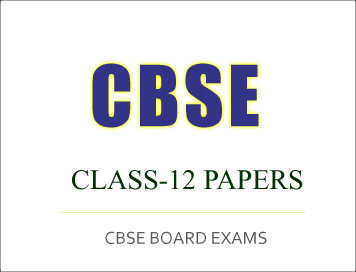CBSE Class-12 Question Papers for IOP/Comptt Examination 2017 : All India Scheme, Fashion Studies
Disclaimer: This website is NOT associated with CBSE, for official website of CBSE visit - www.cbse.gov.in

CBSE Class-12 Question Papers for IOP/Comptt Examination 2017 :
All India Scheme, Fashion Studies
CBSE Class-12 Question Papers for IOP/Comptt Examination 2017 : Fashion Studies
SECTION – A
1. Why is bias strip used to finish the curved edges of a garment ?
2. Give the root word for ‘Ready-to-wear’.
3. Why is it important to choose a correct block for design development ?
4. What is meant by the term ‘Power-dressing’ ?
5. Elaborate the term ‘Garment-collection’.
6. Why is dart-manipulation done ?
7. What is the most efficient way of pinning fabric ?
SECTION – B
8.Describe the procedure of trueing of front shoulder dart.
OR
What are the measurement required for making necklines ? How will you take them ?
9.Name the fabrics preferred for men’s clothing.
10. Why are easy to maintain fabrics preferred for teenage children ?
11. Why are natural fabrics more comfortable than man-made fabrics ? Give one advantage and one disadvantage of natural fabrics.
12. What is the main characteristic of a good sizing system ? List the factors influencing various sizes.
13. Why was trade association formed by Haute-Couture designers ? Name the association.
14. What points should be kept in mind while selecting the type and length of the placker ? (Mention any four)
15. Which company was the first one to use ‘studs’ as trimming and why ? Mention its two kinds.
SECTION – C
16. Historically, many methods have been used for adorning the body. Briefly explain any three methods.
17. ‘Garment-fit’ is evaluated on the basis of five classical elements. Briefly explain the set, line and balance.
18. What points should be kept in mind to provide a smooth shoulder appearance in agarment ?
19. Briefly describe the manner of draping Uttariya or Antariya in ancient India. (Any one)
20. Differentiate between natural, synthetic and blended fabrics.
21. Briefly explain the three steps involved in preparing woven fabrics before cutting.
22. What all information should be included on a pattern ?
23. Give three characteristics of a well fitted armscye.
24. Briefly explain the effects of Indian films and television serials on fashion.
SECTION – D
25. Describe the various techniques of armour construction. (any five)
OR
Briefly explain the influence of war uniforms on civilian clothing.
26. With the help of diagrams explain the steps of shifting waist dart to centre front.
OR
Explain the steps of manipulating shoulder dart to under arm seam. Draw relevant figures.
27. (a) Briefly describe the three types of basic sleeves used in garments.
(b) What design variations can be achieved in a sleeveless bodice by altering the shoulder width ?
OR
“Certain fabrics required special consideration in pattern-selection and lay-out.” Explain.